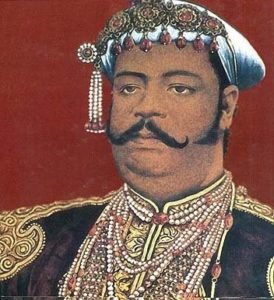Writing of Ancient Indian History
Religious Literary source
VedThe Vedas are a large body of religious texts originating in ancient India. Composed in Vedic Sanskrit, the texts constitute the oldest layer of Sanskrit literature and the oldest scriptures of Hinduism.
Vedas are also called śruti (“what is heard”) literature, distinguishing them from other religious texts, which are called smṛti (“what is remembered”).
In the Hindu Epic the Mahabharata, the creation of Vedas is credited to Brahma.
Vedas Vidi– to know, Shruti- to hear, verbal transmission,
Rig vedas (1500-1000 BC): Prayers, Upveda: Ayurveda, to mandals/chapters/sections
Later Vedic age (1000-600 BC):
Samveda: Saman menas melody, collection of melodies and tunes, MUSDA SAGA, Music and Dance Samaveda, Upveda: Gandharveda, hymns dedicated to Soma, Indra, Agni
Yajurveda: Rituals for performing scrifices TIYAJ, Upveda: Dhanurveda i.e. archery
Atharvaveda: Magical charms and spells toward of evil.Upveda: Shilpveda – architecture MATH
Sections of Vedas – Parts of Vedas are the Samhitas (benedictions, hymns -1700–1100 BCE), Brahmanas (commentary), and the Upanishads (spirituality and abstract philosophy).
Part of Vedas:
Shiksha: Phonetics
Kalpa: Rituals
Vayakarna: Grammar
Jyotisha: Astrology
Nirukta: Etymology
Chhanda: Prosody
There are 18 Maha Puranas (Great Puranas) and 18 Upa Puranas (Minor Puranas), with over 400,000 verses.
The first versions of the various Puranas were likely composed between the 3rd- and 10th-century CE.
The Puranas do not enjoy the authority of a scripture in Hinduism, but are considered a Smriti.
Subject Matter
The subject matters of history are (As per the Puranas),
o Sarga (evolution of the Universe)
o Pratisarga (involution of the Universe)
o Manvantantar (recurring of the Time)
o Vamsa (genealogical list of the kings and sages)
o Vamsanucharita (life stories of some selected characters)
The reign of Parikshit (the grandson of Arjuna, reigned during the Middle Vedic period (12th-9th centuries BCE) ) was considered as a benchmark for the reference of the royal genealogies given in the Puranas.
This may be due to the fact that the Puranas were completed during the reign of Parikshit. As mentioned in the Puranas, the coronation of Parikshit marks the beginning of Kali Age.
In the context of the Puranas, it is observed that in ancient India, ltihas (History) was looked upon as a means to illuminate the present and future in the light of the past.
The purpose of history was to understand and inculcate a sense of duty and sacrifice by individuals to their families, by the families to their clans, by the clans to their villages, by the villages to Janapada and Rashtra, and ultimately to the whole humanity.
The original Buddhist texts are known as Tripitakas.
They are three in number:
(i) The Vinyapitaka describes rules and regulations for the guidance of the Buddhist monks and the general management of the Church;
(ii) The Sutt-Pitaka is a collection of the religious discourses of the Buddha, and
(iii) The Abhidhamma-pitaka contains an exposition of the philosophical principles underlying the religion.
Afterwards, the Mahayana and the Tantrika sects of Buddhism created vast religious literature of their own and Jataka stories (nearly 549 in number) of Mahayanism describing various life-stories of Mahatma Buddha were also written Some later written Buddhist texts like Anuguttar-Nikay which provides us useful information concerning the political, social and religious condition of the 6th century B.C., Mahayana-Sutra, Satsharika, etc. written by Buddhist scholar, Nagarjuna, Mahayana-Sutra Lamkar written by Asanga, Abhidharma-Kosha written by Vasubandhu and several other books like Milinda-Panha, Divya-dana, Manjusrimulakalpa, Lalit- Visitar etc. written by other scholars provide us useful historical material.
All of them constitute sources of knowing the contemporary culture and history of India. These Buddhist religious texts provide useful information to us concerning the polity, political life, different rulers, their dynasties, their rule and their kingdoms up to 6th century B.C. and also social, economic, religious and cultural life of the people in that age. The religious texts, the Mahavansa and the Dipavansa, prepared by the scholars of Sri Lanka also provide us useful information concerning the history of Ancient India.
Jain Religious TextsThe original Jain religious texts were called Agams, Afterwards these were compiled into 14 Purvas and further, the first ten Punas were re-arranged in 12 Angas in the fifth century A.D. Now only 11 Angas are available. Besides, a vast literature was created by Jain scholars afterwards, which also provide us useful knowledge concerning history, culture and civilization of Ancient India.
The Bhadrabhahu Charita refers to several events of the reign of Chandra Gupta Maurya. The Vasudeva Hindi, the Vrahat Kalpa Sutra Bhasya, the Kalika Purana Katha Kosh and alike other Jain religious texts also provide us useful historical material. Among the later Jain religious texts, one of the most prominent ones is the Parisista Parva which was prepared during the 12th century.
Travellers
Deimachos
Period: (320-273 BC)
Greek Ambassador
Came India in the reign of Bindusara.
Megasthenes
Period: (302-298 B.C.)
Greek ethnographer & ambassador.
Ambassador of Seleucus Nicator, who visited in the court of Chandragupta Maurya.
Wrote an interesting book Indica.
Ptolemy
Period: 130 A.D.
From Greece and Geographer.
Wrote “Geography of India” which gives the description of Ancient India.
Fa-Hien
Period: (405-411 A.D.)
Chinese Buddhist Monk
Came to India in the reign of Chandragupta II ( c. 375 – c. 415 CE ), Vikramaditya.
Visited the birth place of Buddha, Lumbini.
His Travelogue “Records of Buddhist Kingdoms”.
Wrote Fo-Kyo-Ki.
Hiuen-Tsang
Period: (630-645 A.D.)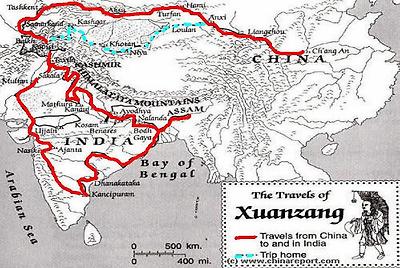
Chinese Buddhist Monk
Visited India during the reign of Harshavardhana (c. 590–647 CE).
Came through Tashkent and Swat Valley.
Book is “Si-Yu-Ki or the records of western world”.
I-tsing
Period: ( 671- 695 A.D.)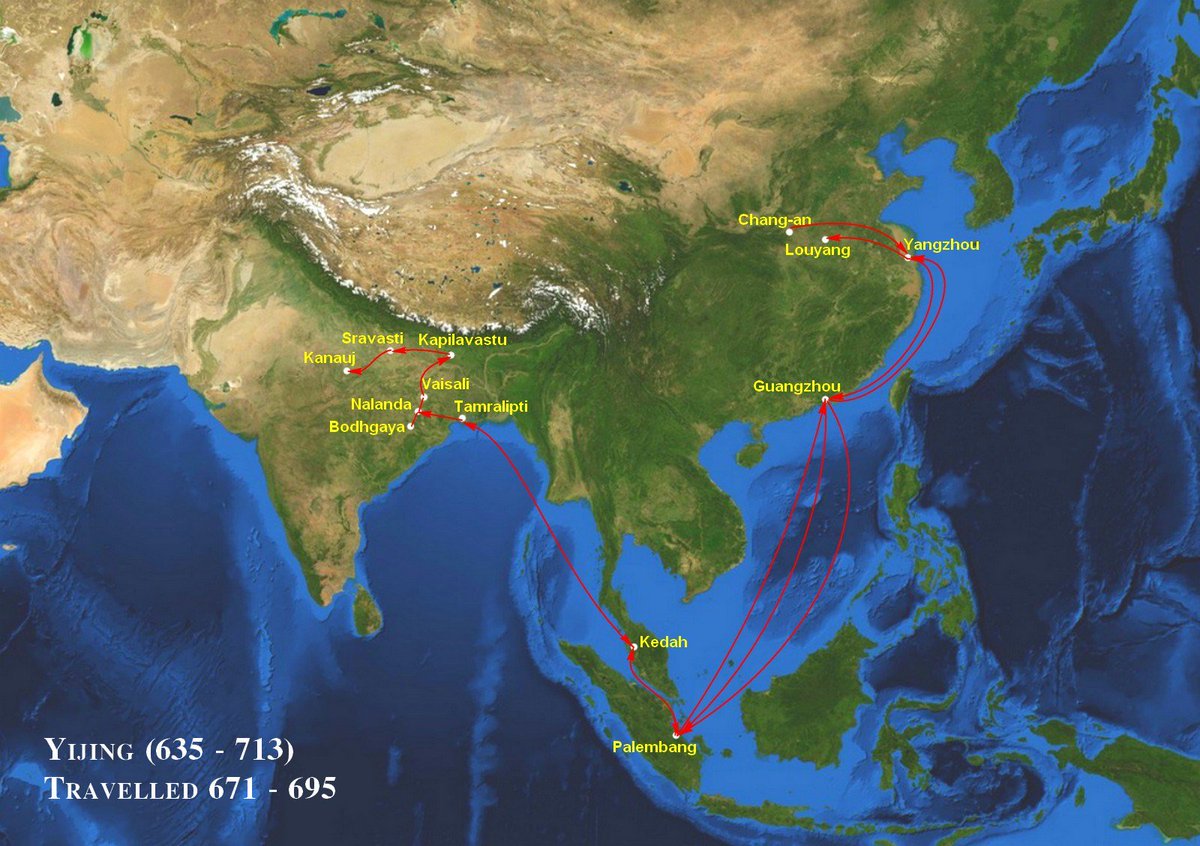
Chinese traveller
Visited India in connection with Buddhism.
His works are Biographies of Eminent Monks.
Gives useful information about the social, religious and cultural life of the people of this country.
Al-Masudi
Period: (957 A.D.)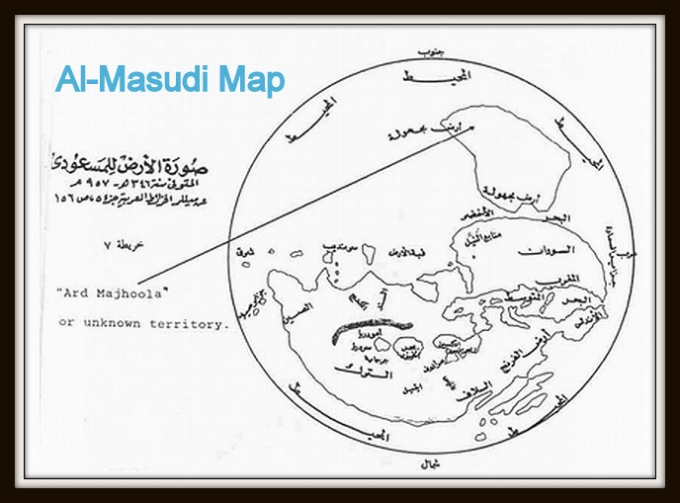
Arab Traveller
Gives an extensive account of India in his work “Muruj-ul-Zahab”.
He travelled to the Indus Valley, and other parts of India, especially the western coast; and he voyaged more than once to East Africa.
Al- Beruni or Abu Rehan Mahamud
Period: (1024-1030 A.D.)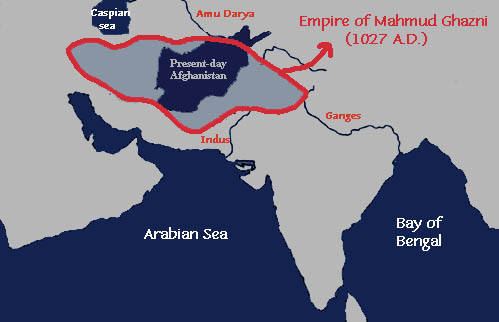
In 1017 he travelled to the Indian subcontinent and authored a study of Indian culture Tarikh Al-Hind (History of India) after exploring the Hindu faith practiced in India. He was given the title “founder of Indology”.
Wrote “ Tahqiq-i-Hind/Kitab-ul-Hind.
Marco Polo
Period: (1292-1294 AD)
Venetian Traveller
Visited South India in 1294 A.D during the reign of Pandyan ruler of Madurai, Madverman, Kulshekhara (1272-1311)
His work “The Book of Sir Marco Polo” which gives an invaluable account of the economic history of India.
Ibn Batuta
Period: (1333-1347 A.D.)
Morrish traveller
Visited India during the reign of Muhammad-Bin-Tughlaq.
His book “ Rehla” (the travelogue)
Shihabuddin al-Umari
Period: (1348 A.D.)
Came from Damascus
He gives a vivid account of India in his book “ Masalik albsar fi-mamalik al-amsar”
Nicolo Conti
Period: (1420-1421 A.D.)
Venetian traveller
Came during the rule of Devraya I of Sangam Dynasty of Vijayanagar empire.
Given a graphic account of Vijayanagaras capital.
Abdur Razzaq
Period: (1443-1444 A.D.)
Persian traveller, Ambassador of Shahrukh of Timurid dynasty.
Came during the rule of Devraya II of Sangam dynasty of Vijaynagar Empire.
Came in India at Zamorin’s Calicut.
Given a brief account of this countryside, in his Matla us Saddin wa Majuma ul Baharain.
Athanasius Nikitin
Period: (1470- 1474 A.D.)
Russian merchant
Visited South India in 1470.
He describes the condition of the Bahmani kingdom under Muhammad III (1463-82).
His narrative “ The journey beyond 3 seas”
Duarte Barbosa
Period: (1500-1516 A.D.)
Portuguese traveller
He has given a brief description of the government and the people of Vijayanagar Empire.
Domingo Paes
Period: (1520-1522 A.D.)
Portuguese traveller
Visited the court of Krishnadeva Raya of Vijayanagar Empire.
Fernao Nuniz
Period: (1535-1537 A.D.)
Portuguese merchant
Came during the rule of Achyutdeva Raya of Tuluv dynasty of vijayanagar Empire.
Wrote history of the empire from its earliest times of the closing years of Achyutdeva Raya’s reign.
John Hughen Von Linschotten
Period: (1583 A.D.)
Dutch traveller
Given a valuable account of the social and economic life of South India.
William Hawkins
Period: (1608-1611 A.D.)
Ambassador of James I, king of England.
Came in India at the reign of Jahangir,the great Mughal Emperor. William finch came with him.
Sir Thomas Roe
Period: (1615-1619 A.D.)
Ambassador of James I, king of England.
Came in India at the reign of Jahangir,the great Mughal Emperor.
Edward Terry
Period: (1616 A.D.)
Ambassador of Thomas Roe.
Describe about Indian social (Gujarat) behaviour.
Franciso Palsaert
Period: (1620-1627 A.D.)
Dutch traveller stayed at Agra.
Gave a vivid account of the flourishing trade at Surat, Ahmadabad, Broach, Cambay, Lahore, Multan etc.
Peter Mundy
Period: (1630-34 A.D.)
Italian traveller
Came in the reign of the Mughal Emperor, Shahjahan.
Gives valuable information about the living standard of the common people in the Mughal Empire.
John Albert de Modesto
Period: (1638 A.D.)
German traveller
Reached Surat in 1638 A.D.
Jeen Baptiste Tavernier
Period : (1638-1663 A.D.)
French traveller
Visited India 6 times in the reign of Shahjahan and Aurangzeb.
Nicolao Manucci
Period: (1653-1708 A.D.)
Italian traveller
He got service at the court of Dara Shikoh.
Francois Bernier
Period: (1656- 1717 A.D.)
French physician and Philosopher.
Danishamand Khan, a noble of Aurangzeb was his patron.
Jean de Thevenot
Period: (1666 A.D.)
French traveller
Given an account of cities like Ahmadabad, Cambay, Aurangabad and Golconda.
John Fryer
Period: (1672-1681 A.D.)
English traveller
Given a vivid account of Surat and Bombay.
View larger map
Authors in Ancient India
Vishakhadatta
Period: (750 AD)
Indian Sanskrit poet and playwright.
Only two of his plays, the Mudrārākṣasa and the Devichandraguptam are known.
Kalhana
Period: (12th A.D.)
The author of Rajatarangini (River of Kings), an account of the history of Kashmir. He wrote the work in Sanskrit between 1148 and 1149.
Somadeva
Period: (11th A.D.)
Somadeva was an 11th century CE writer from Kashmir. He was the author of a famous compendium of Indian legends, fairy tales and folk tales – the Kathasaritsagara.
Vatsayana
Period: (1st-2nd A.D.)
Vatsyayana is the name of an ancient Indian philosopher, known for writing the Kama Sutra, the most ancient book in the world on human sexuality. He lived in India during the second or third century CE, probably in Pataliputra (modern day Patna).
Amoghavarsha
Period: (800–878 CE)
Amoghavarsha was a scholar in Kannada and Sanskrit literature. His own writing Kavirajamarga is a landmark literary work in the Kannada language and became a guide book for future poets and scholars for centuries to come.
Bhasa
Period: ( )
Thirteen plays written by Bhasa belong to this period, most famous of which is Svapnavasavadattam.
Asvaghosa
Period: ( c. 80 – c. 150 CE)
Buddha charita
Bharata
Period: (200 BCE and 200 CE)
Bharata Muni was an ancient Indian theatrologist and musicologist who wrote the Natya Shastra, a theoretical treatise on ancient Indian dramaturgy and histrionics, especially Sanskrit theatre.
Kalidasa
Period: (c. 4th–5th century CE)
Abhigyan Shakuntala, Vikramorvashi, Raghuvansan
Amarshmha
Period: (c. CE 375)
The Amarakosha is a vocabulary of Sanskrit roots, in three books, and hence sometimes called Trikanda or the “Tripartite”.
Varharmihara
Period: (around 500 CE)
Notable works Pancha-Siddhāntikā, Brihat-Samhita, Brihat Jataka.
Aryabhatta
Period: (476–550 CE)
was the first of the major mathematician-astronomers from the classical age of Indian mathematics and Indian astronomy. His works include the Āryabhaṭīya (which mentions that in 3600 Kaliyuga, 499 CE, he was 23 years old) and the Arya-siddhanta.
Patanjli
Period: (mid 2nd century BCE)
The greatest of these are the Yoga Sutras, a classical yoga text.
Harsha vardhan
Period: (c. 590–647 CE)
Harsha is widely believed to be the author of three Sanskrit plays Ratnavali, Nagananda and Priyadarsika.
View larger map
Imperialist Intellectuals
Max Muller
Period: (1823 – 1900)
Friedrich Max Muller is considered as one of the most respected Indologists of the nineteenth century. He was a German, but lived in England. On the financial support of the British · East India Company, he undertook massive jobs of translation and interpretation of the Indian religious texts in English.
· He attained the best achievement of getting translated a huge mass of Sanskrit texts into English, but his approach and intention were never free from the prejudice.
· Muller was inspired by his religious belief and political requirements that affected his entire approach of unbiased writing and interpretation of Indian history.
· The guiding principle under which William Jones, Max Muller, and Vincent Smith wrote Indian history, was to settle all history within the period up to 4,000 B.C.
· In 1868, Max Muller wrote to the Duke of Argyll “The ancient religion of India is doomed, and if Christianity does not step in, whose fault will it be?”
· The majority of works done on Indian history during the 18th and 19th centuries were guided by the preconditions imposed by the belief in the Genesis and to reject all the writing that were projecting India’s past in terms of great civilization and Indian philosophy and thoughts indicating great antiquity for the origins of universe and human beings.
· The major factor that is responsible for the distortion of the ancient Indian history was the British imperial interests in India. They were worried about the fact that popularity of the Indian text among British civilians might develop an inferiority complex in them.
James Mill
1773 – 1836
Between 1806 and 1818, James Mill wrote six volumes on the history of India without ever visiting India or knowing any Indian language. He divided Indian history into three periods i.e.
o Hindu Period,
o Muslim Period, and
o British Period
- Mill presented an extremely demeaning picture of Hindu periods. He condemned every institution, idea, and action of the Hindu period and held Hindus responsible for all the ills of the country.
· Mill’s book was introduced as a text book in the Harley bury school in England, which was established to educate the young Englishmen coming to India as administrators and civil servants.
James Mill, his son John Stuart Mill, and his disciple Thomas Macauley played a very important role in shaping the imperialist policy in India and the future of Indian education in the core of which was the distorted history of ancient India.
Vincent Arthur Smith
1843-1920
- V.A. Smith, an officer serving the British Government in India, prepared the text book called ‘Early History of India in 1904.’ He emphasized the role of foreigners in ancient India. Alexander’s invasion accounted for almost one-third of his book.
· Smith’s racial superiority is clear with his sentence i.e. “The triumphant progress of Alexander from the Himalayas to the sea demonstrated the inherent weakness of the greatest Asiatic armies when confronted with European skill and discipline”.
· Smith had given the impression that Alexander had conquered the whole of India from the Himalayas to seas while the fact is that, he only touched the northwestern borders of India.
· Smith had presented India as a land of dictatorship, which did not experience political unity until the establishment of the British rule.
· The whole approach of Imperial historians was to give such interpretations of Indian history to denigrate Indian character and achievements, and justify the colonial rule.
· Vincent Arthur Smith (1843-1920) prepared the first systematic history of ancient India that published in 1904.
IView larger map

